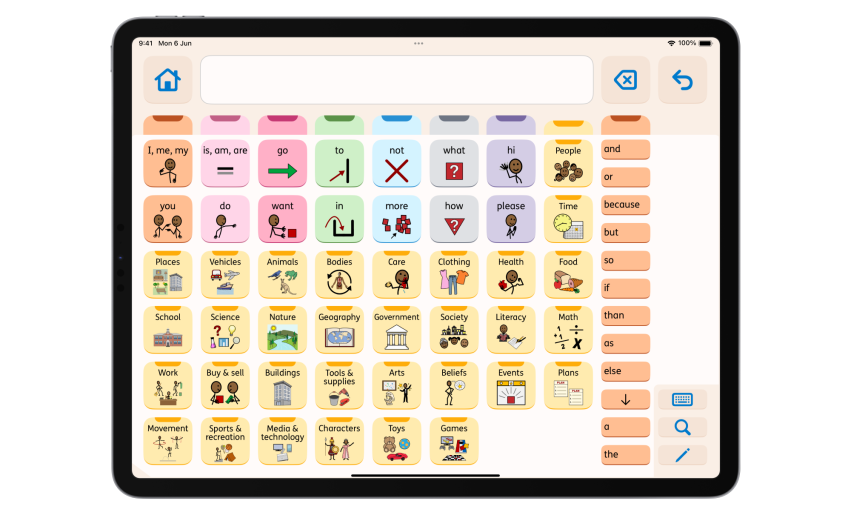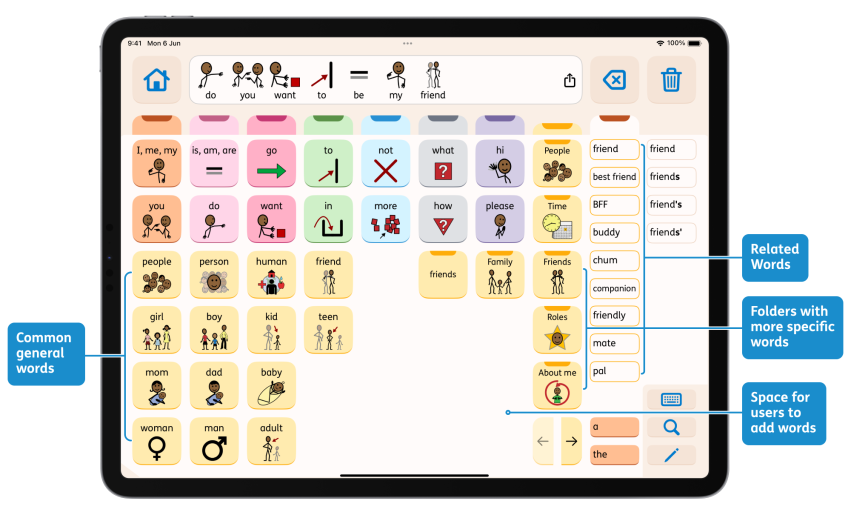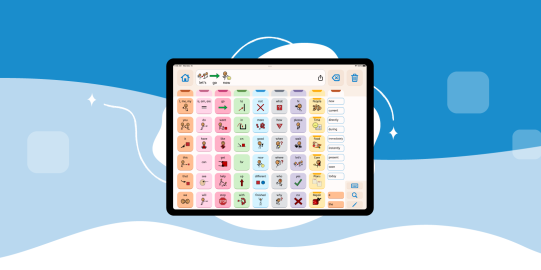Guiding principles
The process of how we selected and organized the fringe vocabulary was guided by several principles:
- AAC needs to be comprehensive. The base vocabulary should be sufficient to participate at home, school, work, and in a user’s community.
- AAC should grow with the user. The base vocabulary should easily expand along with the user’s skill and knowledge.
- AAC should be inclusive. The base vocabulary should reflect the diversity of our society.
- AAC should be individual. The base vocabulary should be easily grown with the words that are personally important to the user.
- Symbol-based AAC is not only for children. The base vocabulary should be relevant to all ages.
AAC needs to be comprehensive
Symbol-based AAC users rely on others to decide which words they have access to. Symbol-based AAC therefore has a responsibility to be comprehensive. Proloquo’s Crescendo Evolution™ was designed with this in mind.
First, we studied anonymous word usage data from tens of thousands of AAC users. We combined word usage from symbol-based AAC users (Proloquo2Go) with those of text-based AAC users (Proloquo4Text). We were not surprised that both groups of AAC users talked about all the common topics, from animals to vehicles, sports to games. But we were particularly interested in the words used by AAC users who can spell any word they want. We identified hundreds of words used by adult users that symbol-based AAC users need access to as well.
Next, we studied vocabulary research to identify additional words that are needed to participate in the school curriculum from early childhood to late elementary. This research helped us identify important concept words that we might have otherwise missed. For example, we already knew from user data that we needed to include the names of holidays. We relied on user data to determine which holidays were most frequently discussed and would go on the first page (Christmas, Halloween) versus the second page of that subfolder. Vocabulary research helped us identify the words that allow users to expand from talking about a thing (like Halloween) to the bigger concept (holiday) and key descriptors (celebration or memorial).
In addition to these common folders, there are also fringe folders for topics such as Work, Media & technology, and Government. Each fringe folder in Proloquo combines the most common words for that topic along with the important concepts that let us talk about it. For example, the Work folder includes jobs and workplaces, plus words like manage and schedule. The Buy & Sell folder combines words like store and shop with the things we associate with shopping, spending, and saving.







